Adventures On Britain's Most Eco-Friendly Island
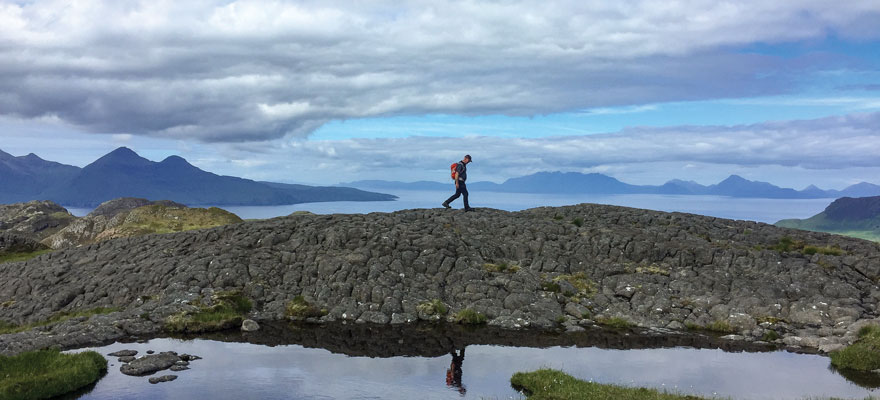
Words by Robbie McKelvie
Scrambling over the last boulder, I summit the pitchstone lava peak with only Mendelsohn for company. My heart stirs to his Hebrides Overture as the isles unfurl all around – a vast natural amphitheatre, instantly blowing away lingering lockdown blues.
There’s been a lot of talk about the restorative power of nature over the past 18 months, and nowhere is this more obvious than Eigg, the tiny, community-owned island off the West Coast of Scotland that’s arguably the most eco-friendly place in the UK.
In 1997, after years of issues with absentee landlords, the people of this island clubbed together to buy their home. Just over a decade later, Eigg became the first island in the UK to generate all its own energy, entirely from wind, hydro and solar power. Visitors cannot miss Eigg’s environmental credentials. Step off the ferry from Mallaig and you’re greeted by a sign which invites you to get on board with the island’s ‘Big Green Footsteps’. You’re also presented with some of the most adventurous landscapes anywhere in the UK - an ideal place to explore with your own two feet.
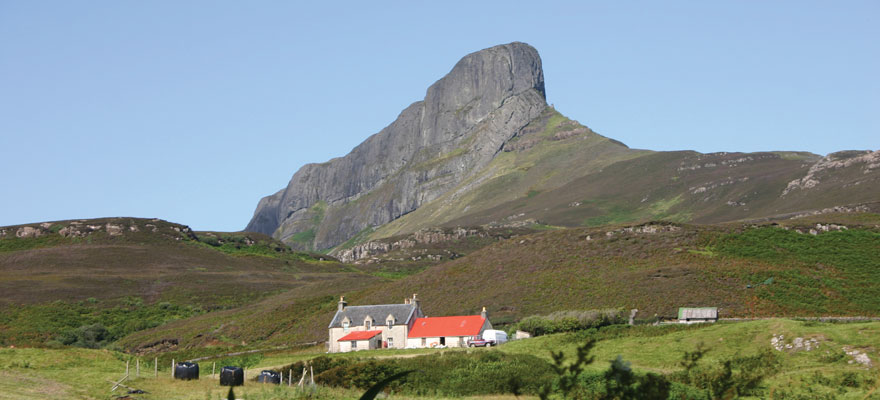
My first target on arrival in Eigg was An Sgurr. It had to be. The mountain is daunting from the ferry, its sheer 393m high face looking impregnable. Go round the back however, and you’ll find a relatively easy route curling up the hill and you can reach the top in under two hours, with the option of tackling some serious scrambles en route. The summit offers one of the finest views in the Hebrides – ergo, one of the finest views in Europe. Eigg’s fellow Small Isles sparkle around, as Rum’s Cuillin mountains vie with Skye’s more distant namesake for attention. Come down from the peak, and you’ll find that Eigg is a Treasure Island of adventure opportunities. The population is only just over 100, leaving lots of wild landscapes, despite the territory measuring just nine kilometres by five. It’s part of the globally recognised Lochaber Geopark too, affording it protected status.
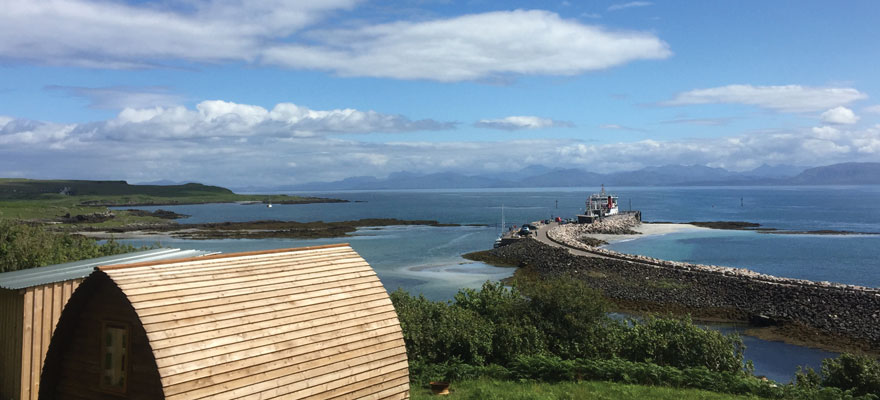
Unlike the rest of the UK, Scotland allows you to pitch your tent wherever you want, and you can wild camp on much of Eigg - although the local community request you stick to Galmisdale Bay or the Singing Sands, where cows and sheep make welcome, if occasionally nosy, neighbours. I prefer to put a few bob back into the community however, and opt to stay at the cosy wooden pods that peer back across to the ferry in Galmisdale.
You’re not allowed to take cars over to Eigg, but a bike is a better way to get around anyway. The few roads are great for cycling, with the big skies, very few vehicles, and only the occasional sheep crossing to watch out for. I picked up my bike from Eigg Adventures, where one of the owners, Owain, explained the island’s charms: “It’s a great place for just getting out into the great outdoors, whether you want to stroll a beach or yomp through the wilds.”.
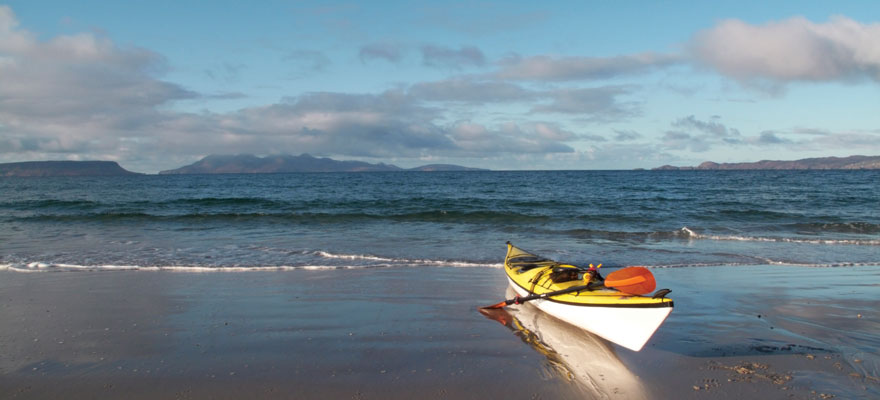
Owain was right. I pushed on to the other side of the island, where the Singing Sands awaited. They weren’t so much singing as squelching, when I visited, but the ocean and hill views across to Rum were cinematic - the sort to set Ben Fogle salivating. Eigg Adventures rent out kayaks too – a special experience at Atlantic-level with seabirds splashing everywhere. As I paddled, marauding gannets plunged into the water around me like dive bombers, risking breaking their necks as they hurtled downwards at 90kmph.
Dolphins and porpoises also patrol these waters, and you can see whales too, if you’re lucky. The paddling is relatively straightforward, although you need to be aware of quickly-changing local conditions - and the seals. I was almost turfed out of my kayak after slipping into a wee cove, and unwittingly interrupting a large grumpy male’s lunch.
Given its size, Eigg isn’t a destination for long distance walks or truly testing trails. But it’s a place where walking for even an hour can take you somewhere deeply special, away from the imprint of man, to spaces you’re more likely to share with a sea eagle than a fellow sightseer.
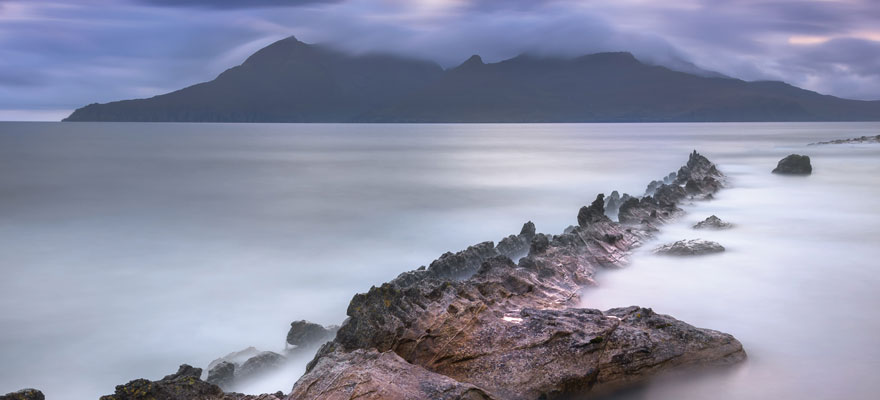
My favourite corner of the island was Sgòrr an Fharaidh, an off-the-beaten-track hill in Eigg’s north. After a short, sharp ascent I made it to the striking rock formation the locals call the ‘Finger of God’, then lost a couple of hours in the Land of the Gods easing along an escarpment with airy views out to Eigg’s necklace of beaches. Skye rose up to the north, a glowering leviathan. I felt as small and powerless as I did on my first day at primary school.
Afterwards, enjoying fresh mussels hauled up from a pot on the pier at Galmisdale Café & Bar, I found the talk of the day turning to the island’s ‘new’ dinosaurs. Last summer a 166 million-year-old fossil was unearthed, identified as a Stegosaurus bone. Eigg might be the future when it comes to energy, but it’s still the kind of place where you could easily imagine stumbling across something Jurassic as you explore.









